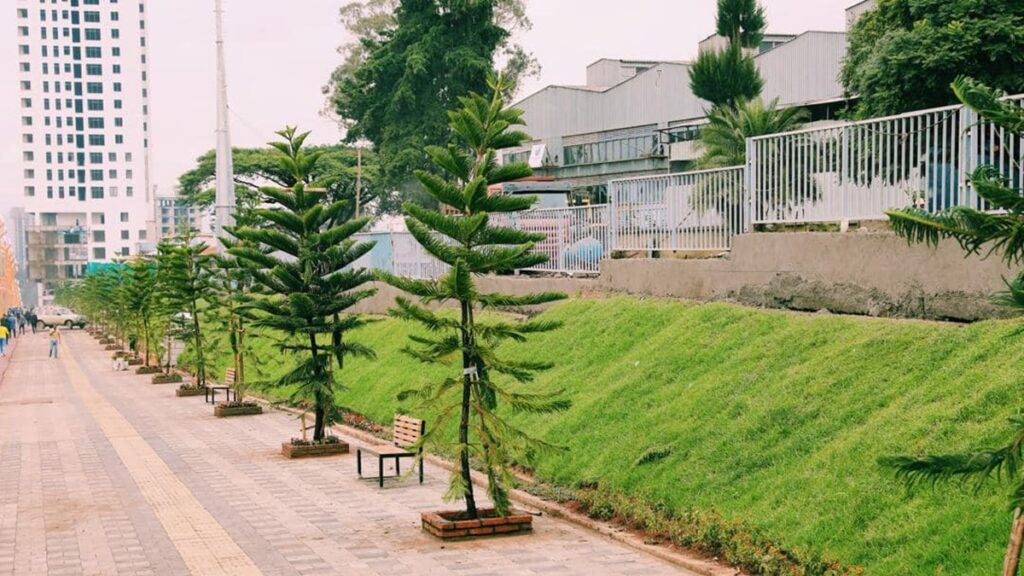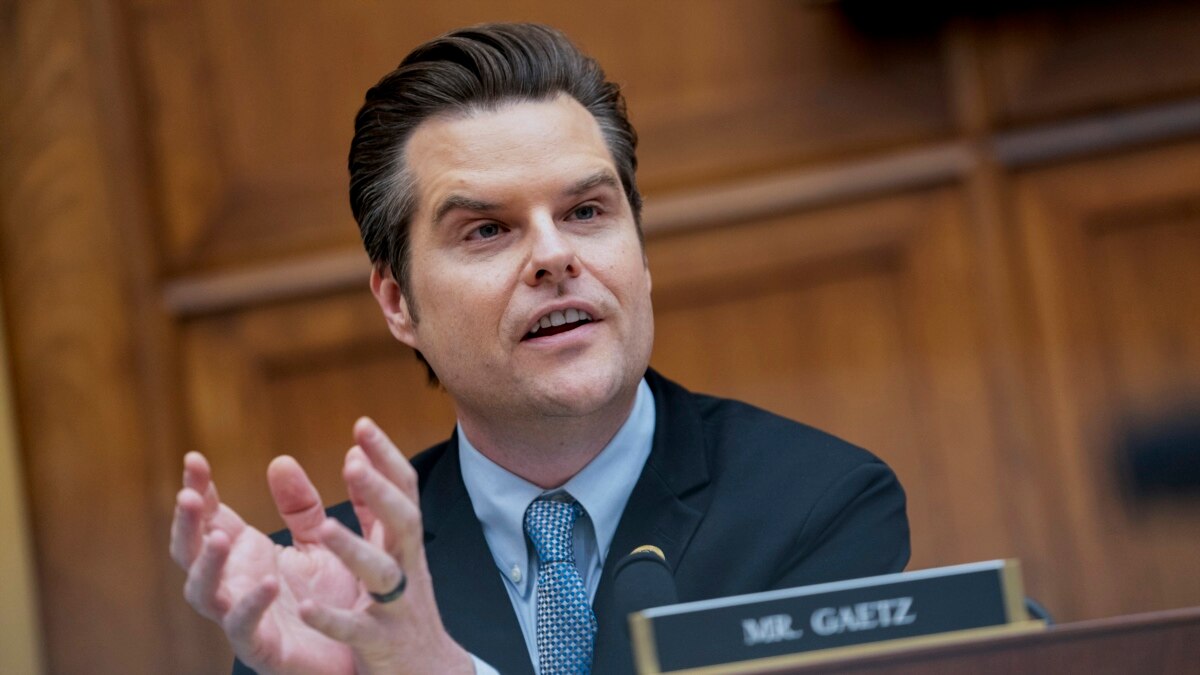By Getachew T. Alemu
Addis Abeba – The historical capital of Ethiopia is seeing a facelift. Extending in at least three directions from the old city center – Piassa – the urban redevelopment project, named the Corridor Development Project (CDP), has brought wider roads, dedicated cycling lanes, paved pedestrian, pedicured green buffer and road side trees to the old neighborhoods of the City. Spreading away from the newly built Adawa Museum and the ongoing Grand Palace Project on Yeka Mountain, the project creates modern connections to the city.
The heated debates around the demolishing of Piassa’s old and dilapidated settlements have now waned. Social media threads about the relocation of iconic service providers, such as the Baklava House, are no more. The trending pictures of the time are the newly installed street lights, the lighted palm trees of the new roads and the dancing fountains. So much has changed in the last four or five months that the debates have shifted.
True, Ethiopia is struggling with a backlog of economic challenges – from the debt trap to very high inflation – but Addis Ababa seems to be determined to shift the narratives. The record speed and mobilization at which the redevelopment project is happening could be a new trendsetter for the rather lethargic project management scene of the country that continues to cost the economy hugely. Studies by the Ministry of Finance show that the cost of public sector project delays average around 110% of project budget, which imposes a huge burden on the economy that struggles to meet multiple demands.
“There can be many questions raised as to how the government rationalized the budget of the project and even how the project is prioritized in the public investment framework. But appraisal of public sector projects takes more than economics.”
The mind boggling budget of the redevelopment project that the Mayor of the City, Adanech Abebie, mentioned – i.e 33b Birr – is by no means a small budget for an economy that is struggling with a plethora of challenges. For a government that shies away from budgetary accountability, giving all sorts of excuses, mentioning such extraordinary allocations is becoming a norm rather than an exception. There can be many questions raised as to how the government rationalized the budget of the project and even how the project is prioritized in the public investment framework. But appraisal of public sector projects takes more than economics.
Certainly, Ethiopia’s current political dynamics is far from ideal for major economic projects. Conflicts continue to engulf much of Amhara and Oromia regions, while Tigray is struggling to put things together after the deadly war. Consecutive droughts have affected Oromia, Somali and Afar regions that millions are living on handouts. The country’s debt overhang continues to shock many parts of the economy, with access to foreign exchange for even basic things highly strained. Inflation deteriorated purchasing power so much that consumers are finding themselves helpless in the face of continued rise in prices of basic consumables. Regulatory uncertainty rocks the business space so much so that nothing looks ordinary, despite the many declared reforms.
Amid all these, however, Addis Ababa’s Corridor Development Project (CDP) stands as an anticipative upshot. It is a showcase that Ethiopia may be prepping for a new normal that combines modernity with developmentalism. The new vision may be centered on making urban centers the hubs of economic activity, green growth and sustainability. The symbolism and historical narratives of the City are now being fundamentally shaken towards one of multiculturalism.
Leaving the architectural, engineering and project management aspects of the redevelopment project for specialist commentators, I wish to reflect on what the new urban redevelopment project means for the economy of the City and the country.
“If anything, the major economic benefit of the corridor development project is shaking the grounds of this extractive market structure by physically dislocating it.”
As an economic hub, Addis Ababa is an overburdened capital city. It hosts the trading, financial, logistics, production and facilitation nerve centers of the Ethiopian economy. Unlike its post-colonial peers in West and Southern Africa, Addis Ababa is a multi-purposed capital city. As a lone mega city in a country of 120 million people, it shoulders huge responsibilities in making the national economy work.
A typical feature of the city has been its overly centralized markets. Established around the old neighborhoods of Merkato and Piassa, the tradable sector of Ethiopia’s economy gets dictated from a center known for its oligopoly and impenetrable clientelism. Entry into these markets is almost impossible because operations are run by networks of families that use both formal and informal means to deter entry of new market players. Commodities, from gold to consumables, from industrial goods to construction materials, get their prices fixed here, with all other corners of the country standing as price recipients.
If anything, the major economic benefit of the corridor development project is shaking the grounds of this extractive market structure by physically dislocating it. This opens the door for new market entrants, while it pushes old players to adjust their game to new rules. The relocation of Atkilt Tera, for example, has brought in a decentralized vegetable market in the city that makes price discovery easier. It also opened the space for new market players that the old network of speculation and hoarding has become less powerful.
Revitalization of old neighborhoods will pave the road for new developments, enhancing economic activity and employment in the localities. Neighborhoods such as Arat Kilo, Kebena, Mexico and Sar Bet are now seeing better roadways, transport connections, parking spaces and standardized building access points. The redevelopment has also opened spaces for greeneries and socializing spots.

In places like Piassa, the clearing of slums has opened large tracts of land for new commercial and residential development. Redeveloping these plots will help create a new commercial dynamic in the neighborhood. As Piasa is considered as the heart of modernity, such a trend will easily transpire into other parts of the city and the country. Since the redevelopment will constitute new residential units, then, there is a high chance that Piasa could regain its popularity as a revitalized integrated neighborhood.
If there is one thing that Addis Ababa struggles hugely, it is youth unemployment. Young people from all corners of the country flock to the city in search of jobs and new opportunities. The number of young people entering the job market in the city does not match with the number of jobs the city is able to create. Hence, addressing unemployment has become a major priority for the city administration.
And one area that the redevelopment project could contribute is job creation. On the one hand, the new sustainable development model the project introduced could create jobs in new sectors, such as landscaping, energy saving technologies, green transportation, finishing works and so on.
On the other hand, the redevelopment project opens the space for small and medium enterprises (SMEs), which are crucial instruments of job creation in the city. As it stands, the redevelopment project has opened spaces for creating standardized and upscale services by SMEs. Such can be done, for example, using the spaces under partially demolished buildings.
As in major cities in Europe, for instance, standardizing outlets for newspapers, fast food, art works, artifacts, personal services and so on could be introduced using these spaces. The shops in the underground of Arat Kilo Roundabout could be used to experiment such an approach.
But that would not be enough. The city administration needs to build dedicated SMEs production and shopping buildings on the newly redeveloped roads so that Addis Ababa can have an integrated commercial dynamic. Such buildings will provide consumers the options, increase availability, stabilize prices and enhance competition. For residents, this will mean jobs and better income.
A crucial aspect of the redevelopment project is its green footprint. Not only has the project included a green buffer between the car way and the pedestrian, but it also constitutes a dedicated green outer layer that provides space for sitting and socializing. If taken seriously and replicated in all other projects, this would bring a new practice in the design and implementation of development projects in Ethiopia.
Often, the green aspect of development projects has been provided with lip service. With the new standards of the redevelopment project, Addis Ababa might be setting itself to be one of the greenest cities in Africa.
With the new green development footprint comes green jobs and green businesses. From transportation to delivery, from construction to energy, the redevelopment project marks the start of a new era in a city that consumes a large part of imported fuel of the country, which costs more than 5b USD per annum, which is 167% of the goods export revenue of the country.
In the grand scale of things, the redevelopment could be a start of a new developmental reorientation of a government that spent the last six years in deadly political squabbling that continues to cost the country hugely. In this sense, I see similarities with 2001.
The 2001 political tremor within TPLF marks the end of an era of political wrangling and the start of a new era of developmentalism. The winning camp of TPLF came to a realization that the future of the country rests on delivering development. It is after this time that most of the development policies and programs of EPRDF came to being.
“…Addis Ababa’s redevelopment project is the first public sector effort since 2020 where development stands at the center.”
In a similar vein, the last six years have been full of terrible political gymnastics, conflicts and fallouts. Of course, the cost of the instability is momentous. Social fabrics have broken, mistrust prevailed, hatred propagated and extrajudicial killings simplified. There are ongoing efforts in transitional justice and national dialogue meant to attend some of these challenges. But a lot has to also happen in terms of accountability, serving justice and rehabilitating displaced people.
That being the case, Addis Ababa’s redevelopment project is the first public sector effort since 2020 where development stands at the center. Many agencies, from the City Hall to public utilities, have worked in close collaboration to realize it. Public and private contractors have put their optimal efforts to deliver tasks on time. For once, people in Addis have started to talk less about politics and more about development. This is indeed such an important deviation.
The city administration and the government need to build on this new momentum to set the path for the future of the city and the country.
Indeed, it is not all a smooth ride. There are things that need to be corrected. Proper planning has to be put in place so that the rushed approach is avoided. Transparency and accountability have to be streamlined in procurement processes. Issues related to right of way and compensation need to be treated with no favoritism. Beyond all, policy makers in the City Hall need to think creatively in how to leverage such projects for job creation, enhanced private sector engagement, SMEs development and improving competition.
As Ethiopia struggles to come to terms with itself on many fronts, from politics to economics, the Addis Ababa Corridor Development Project could be a new breath of hope for the people of the country who are desperate for stability and development. AS
Editor’s Note: Getachew T. Alemu is a policy expert working on the tangent of development and public policy in Africa.









